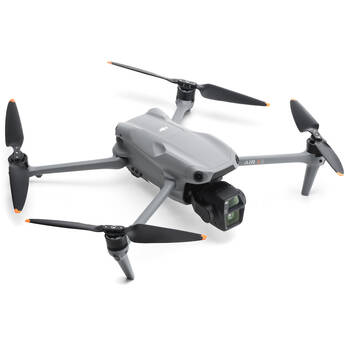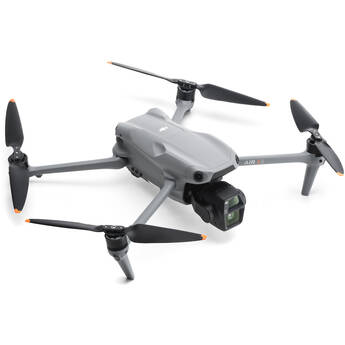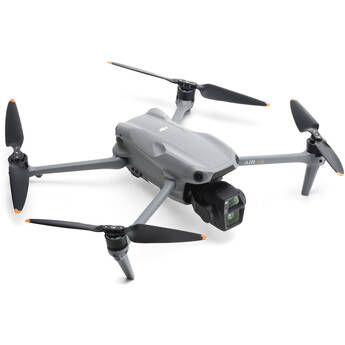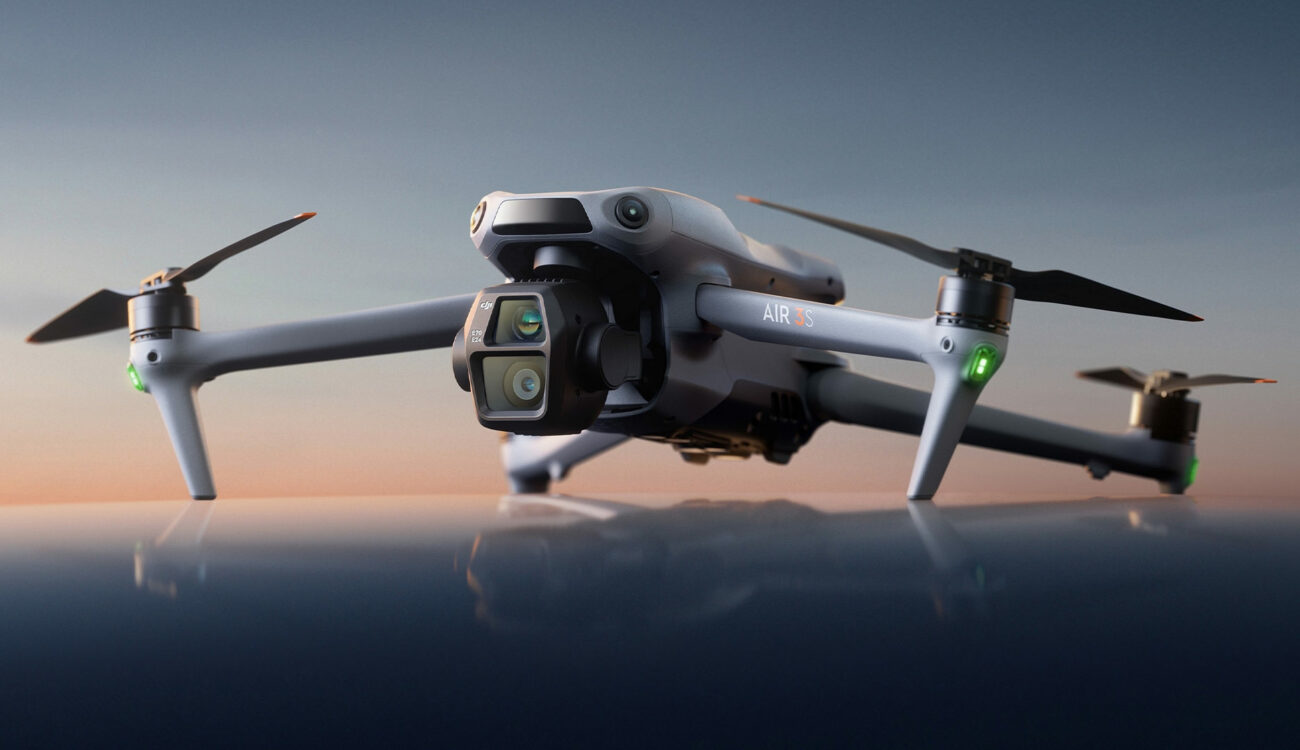
The new DJI Air 3S drone features a larger 1-inch type 50MP sensor for the main 24mm camera. The second 70mm telephoto camera has a 1/1.3-inch type 48MP sensor. The drone has a maximum flight time of 45 minutes and brings some new improvements, such as a front-facing LiDAR sensor, a better night-time flying experience, and more. The Air 3S is available now, starting at €1,099.
After releasing the tiny, affordable, and easy-to-fly DJI Neo last month, the Chinese tech company DJI brings out yet another new drone today. This time, it’s the DJI Air series that gets a refresh. Let’s take a quick look at what the new DJI Air 3S has to offer.
The return of the 1-inch sensor
Back in April 2021, when DJI announced the Air 2S drone, many filmmakers and photographers were pleased with the promising specs. The lightweight sibling of the larger DJI Mavic 2 Pro received a new camera module with a 1-inch type 20MP sensor that could record 5.4K 10-bit video in up to 30fps. Thanks to the appealing image quality with improved low-light performance, this particular drone became fairly popular among the filmmaking and photography community.
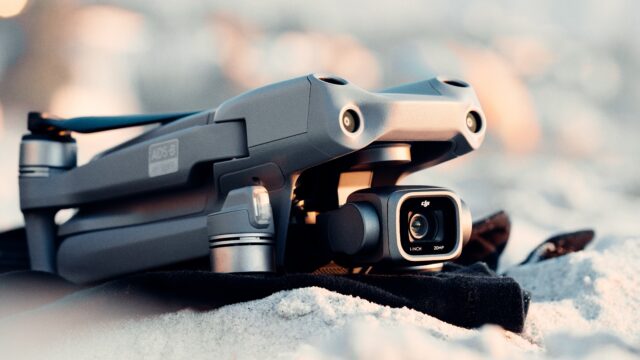
Last summer, I had the chance to review the DJI Air 3, a drone that some people considered a successor to the Air 2S, while others thought of it more as an Air 2 successor. The reason is that there was a slight “downgrade” with the drone’s main camera (compared to the Air 2S). With the Air 3, DJI added a second camera with a 70mm equivalent telephoto lens, but the main 24mm camera “only” got a 1/1.3” sensor that offered up to UHD 4K video with 60fps.
Philip Bloom's Cinematic Masterclass
Well, today, the 1-inch type sensor returns back to the Air series with the new DJI Air 3S (along with other improvements, of course).
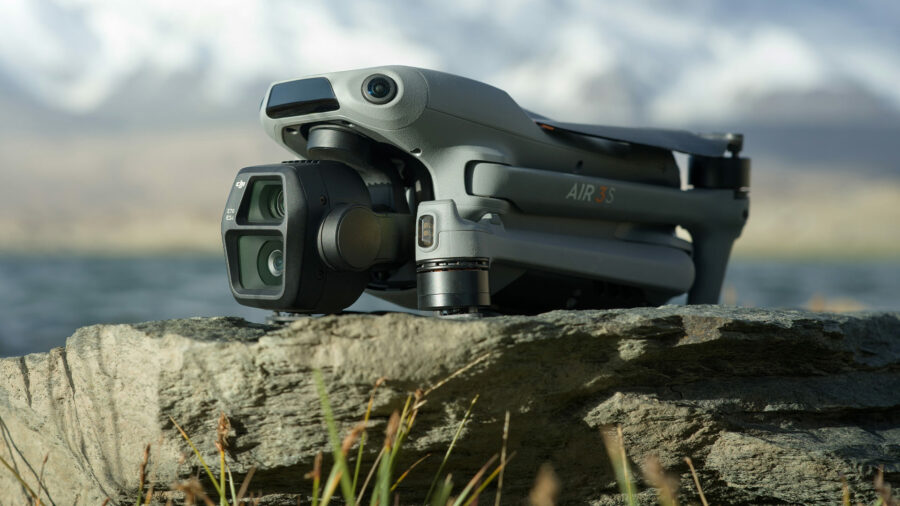
DJI Air 3S – up to 45 minutes flight time
Last year, during my DJI Air 3 review, I observed the trend of the growing Air series. The takeoff weight was significantly heavier with every generation of DJI Air:
- DJI Mavic Air (released in 2018) – take-off weight 430g
- DJI Mavic Air 2 (released in 2020) – take-off weight 570g
- DJI Air 2S (released in 2021) – take-off weight 595g
- DJI Air 3 (released in 2023) – take-off weight 720g
Well, the trend continues with the Air 3S as the drone features a takeoff weight of 724g (which puts it in the C1 category in Europe). As I said last year, I perceive the weight growth as a good thing as it makes the drone more stable and wind-resistant. This is, of course, only true if the weight gain does not make the drone cross a regulatory border (as what happened with the DJI Mavic 3 Pro).
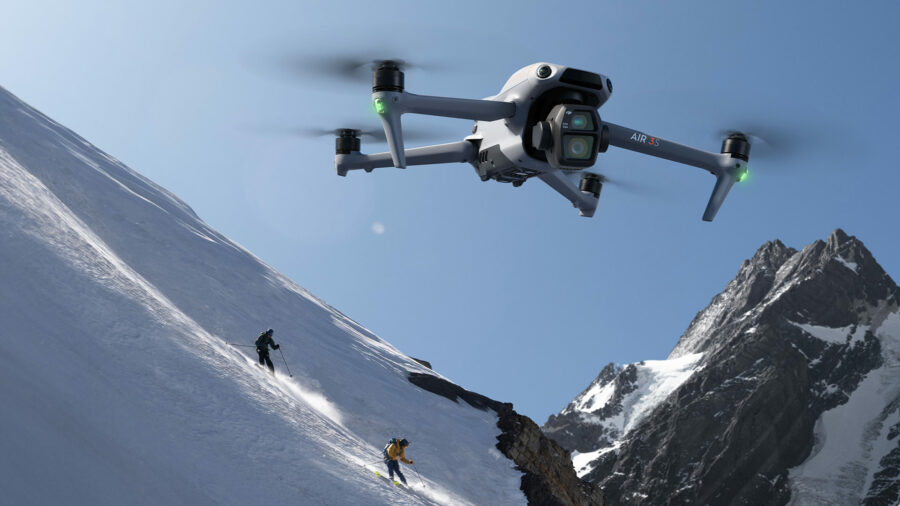
The drone can stay in the air for up to 45 minutes, and with the new 10-bit O4 video transmission, the Air 3S can send a 1080p 60fps 10-bit video signal over a distance of up to 20 kilometers (in FCC mode).
New dual-camera module
It is no surprise that the most exciting updates happen with the camera module. Just like the Air 3, the DJI Air 3S features a dual-camera setup:
- Primary camera features a 1-inch type 50MP CMOS sensor with 24mm (equivalent) f/1.8 lens (close focus 0.5m).
- Secondary telephoto camera offers a 1/1.3”-type 48MP CMOS sensor with a 70mm (equivalent) f/2.8 lens (close focus 3m).
Both cameras support the same recording modes, such as 4K UHD (3840 x 2160) up to 60fps (with HDR option) or 4K UHD (3840 x 2160) up to 120fps. Video recording is available either with H.264 or H.265 codec with a maximum bitrate of 130Mbps.
- 4K: 3840×2160 @ 24/25/30/48/50/60/120fps
- FHD: 1920×1080 @ 24/25/30/48/50/60/120/240fps
- 2.7K vertical shooting: 1512×2688 @ 24/25/30/48/50/60fps
The company claims that both cameras can now record 10-bit H.265 even with a normal color profile, which features a higher maximum ISO of 12,800. The other color modes, D-Log M (10-bit) and HLG support a maximum ISO of 3,200. DJI claims both cameras offer a maximum dynamic range of 14 stops.
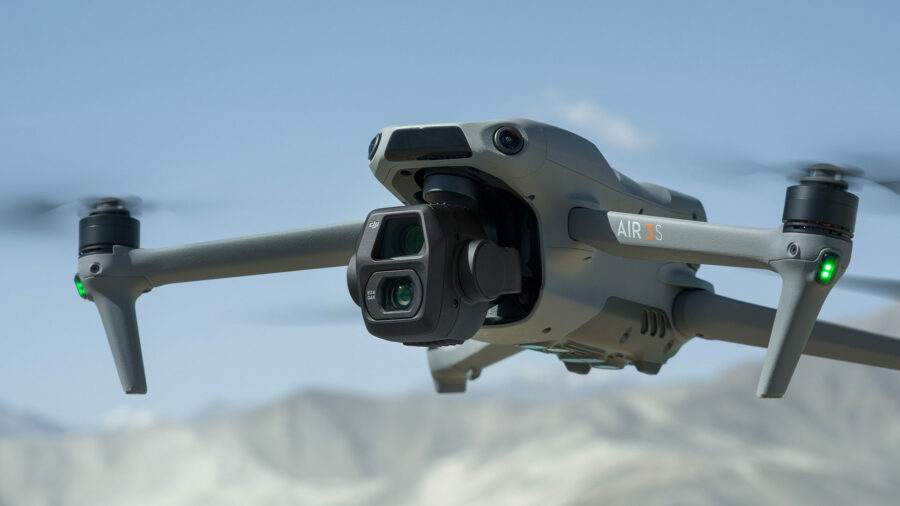
On top of a MicroSD card slot, the drone also offers 42GB of built-in storage. Off-state quickTransfer enables sending files from the Air 3S to a smartphone even when the drone is powered off. Transfers to a computer can also be done with the drone powered off by simply connecting Air 3S via a compatible USB cable.
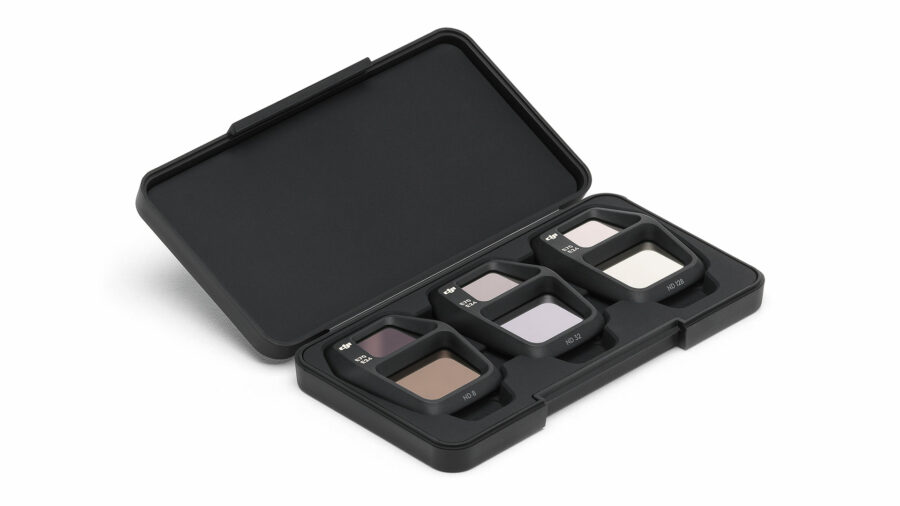
The new Free panorama mode (supported by both cameras) enables seamless creation of panoramic shots by stitching together multiple images with a manually selected subject or area.
Focus on nighttime flying
According to DJI, the Air 3S is the first DJI drone offering a front-facing LiDAR sensor while also featuring downward infrared time-of-flight (TOF) sensors and six vision sensors (two at the front, rear, and bottom). Thanks to this array of sensors, the drone can achieve omnidirectional obstacle sensing and can autonomously follow routes even at night.
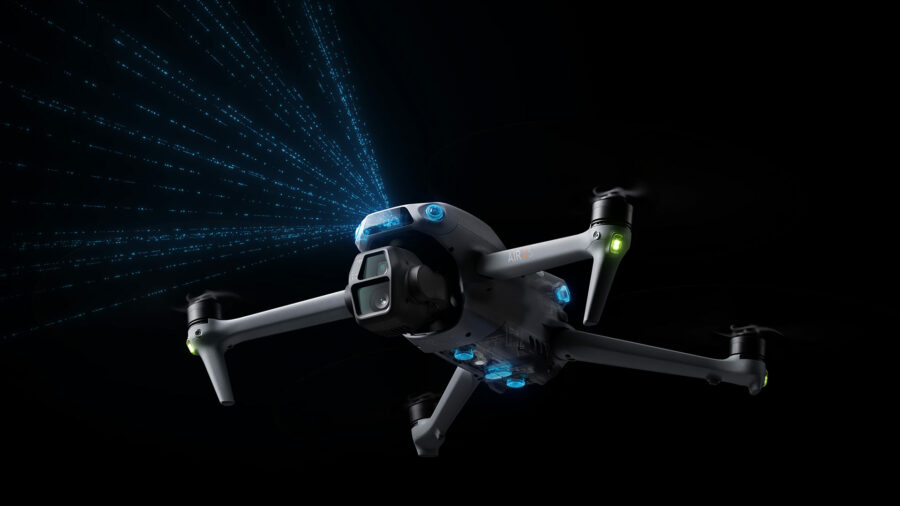
Air 3S offers Active track 360° as well as a Subject focusing feature. As DJI says, the drone can automatically keep any subject in the frame and follow it even when it becomes partially obscured (such as standing behind bushes or on a bridge).
The drone’s charging hub supports PD fast charging and a power accumulation feature. This can transfer the remaining power of multiple low-power batteries into the battery with the highest remaining power.
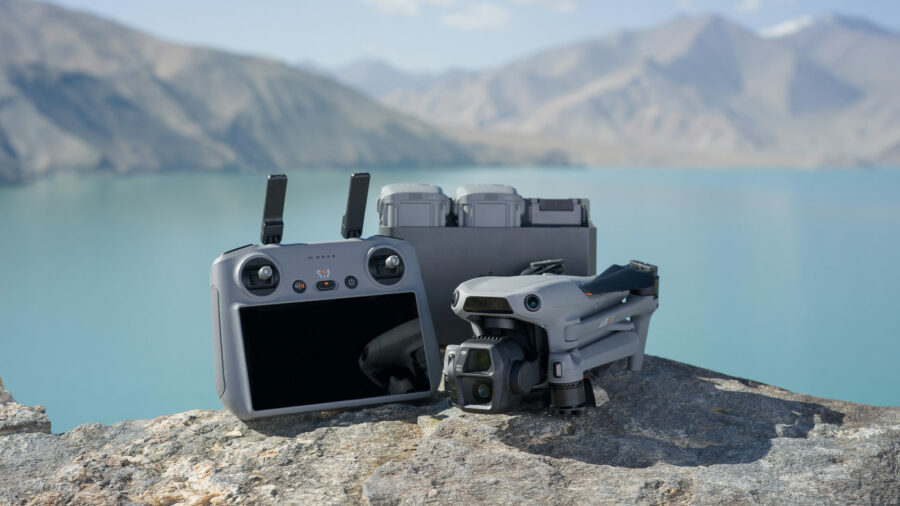
Another interesting feature is the “local data mode.” This acts like “airplane mode” on the phone by completely disconnecting the DJI Air 3S from the internet, ensuring all data stays only in the drone.
Price and availability
The new DJI Air 3S drone is available now, and, as always, there are multiple configurations to choose from:
- DJI Air 3S with the RC-N3 controller (requires connecting to a smartphone) retails for $1,099 (from €1,099 in Europe).
- DJI Air 3S Fly More Combo with the RC-N3 controller (requires connecting to a smartphone) retails for $1,399 (from €1,399 in Europe). This further includes an ND filter set, two additional batteries, a battery charging hub, a shoulder bag, and more.
- The DJI Air 3S Fly More Combo (DJI RC 2) retails for $1,599 (from €1,599 in Europe). It includes the DJI RC 2 remote controller with a 5.5-inch 1080p 700-nit high-bright screen, an ND filter set, two additional batteries, a battery charging hub, a shoulder bag, and more.
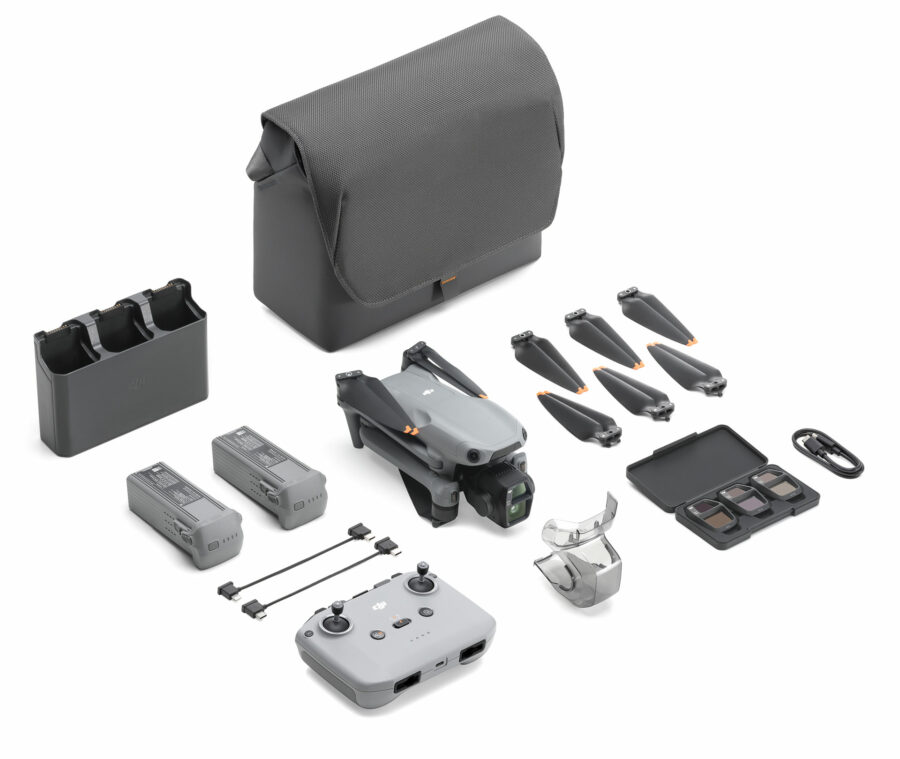
What do you think about the new DJI Air 3S drone? Are the upgrades big enough for you to upgrade? Let us know in the comments section underneath the article.



